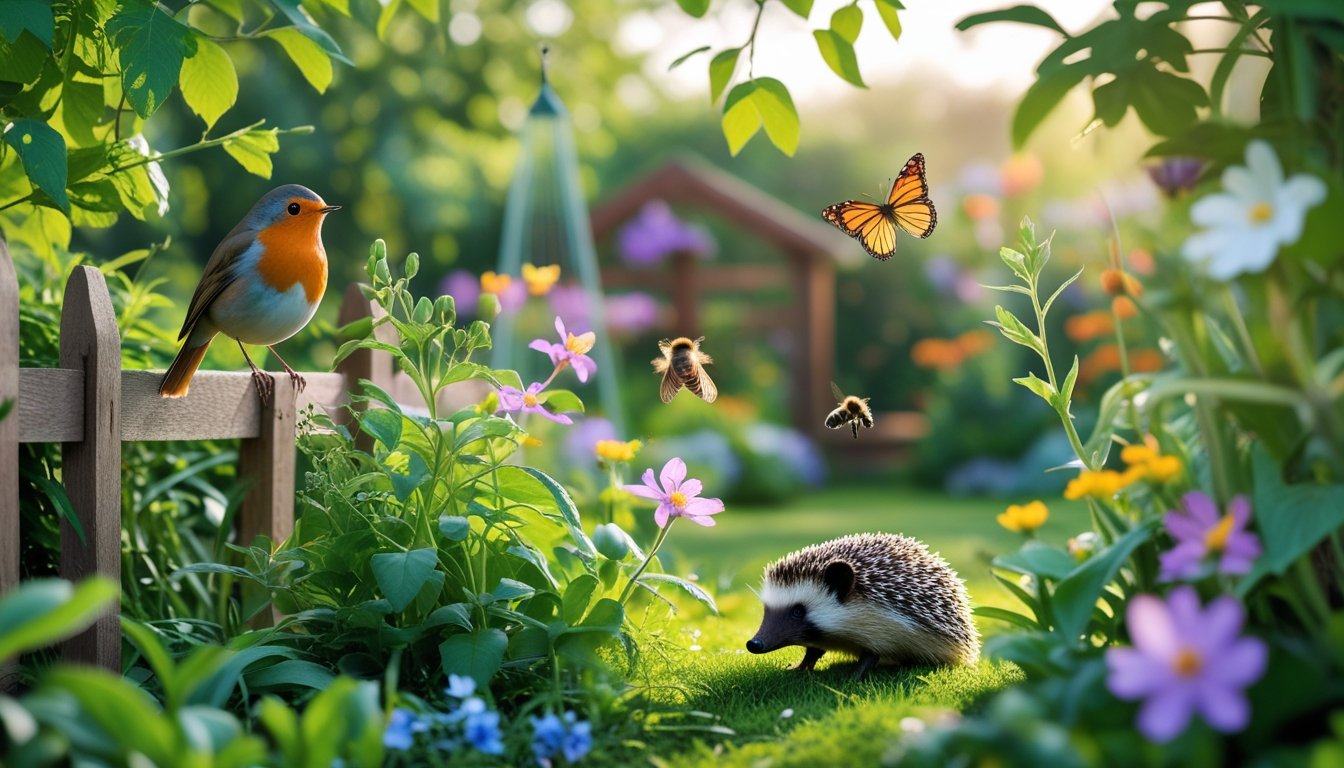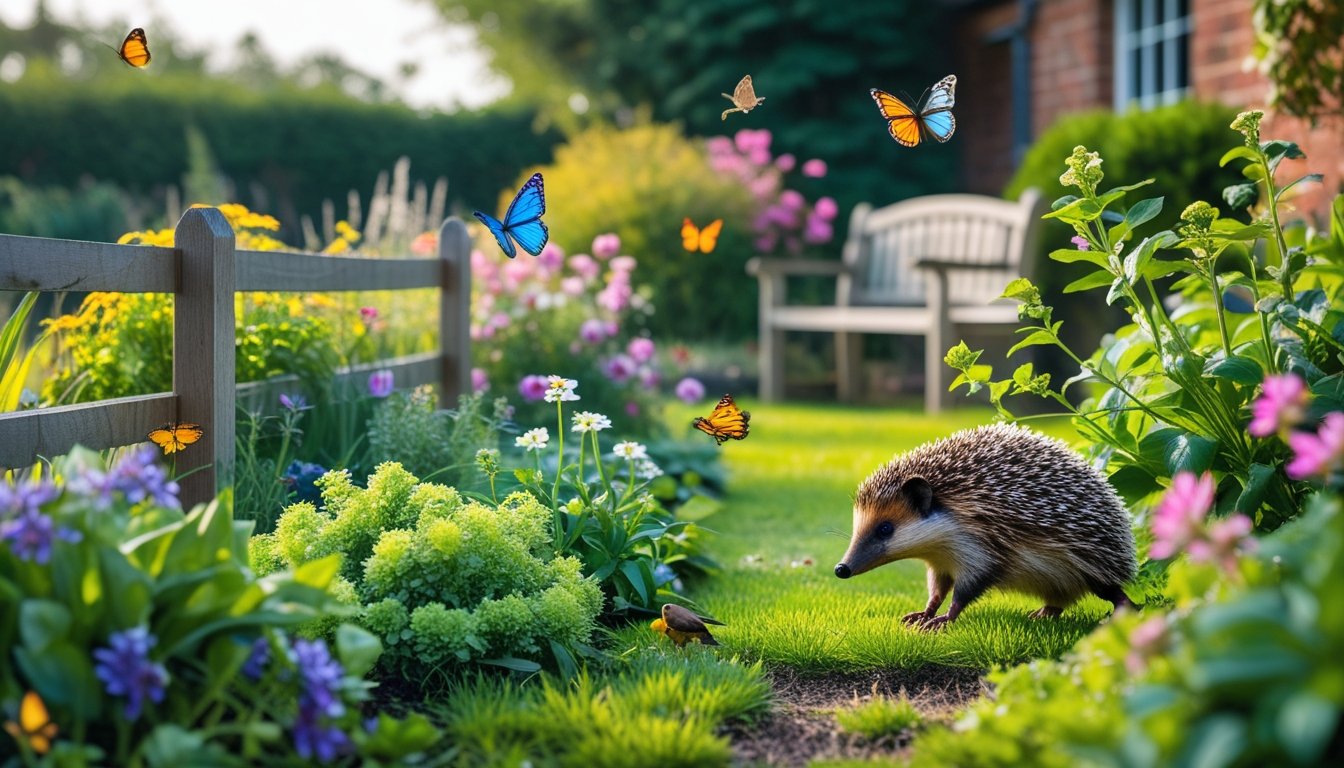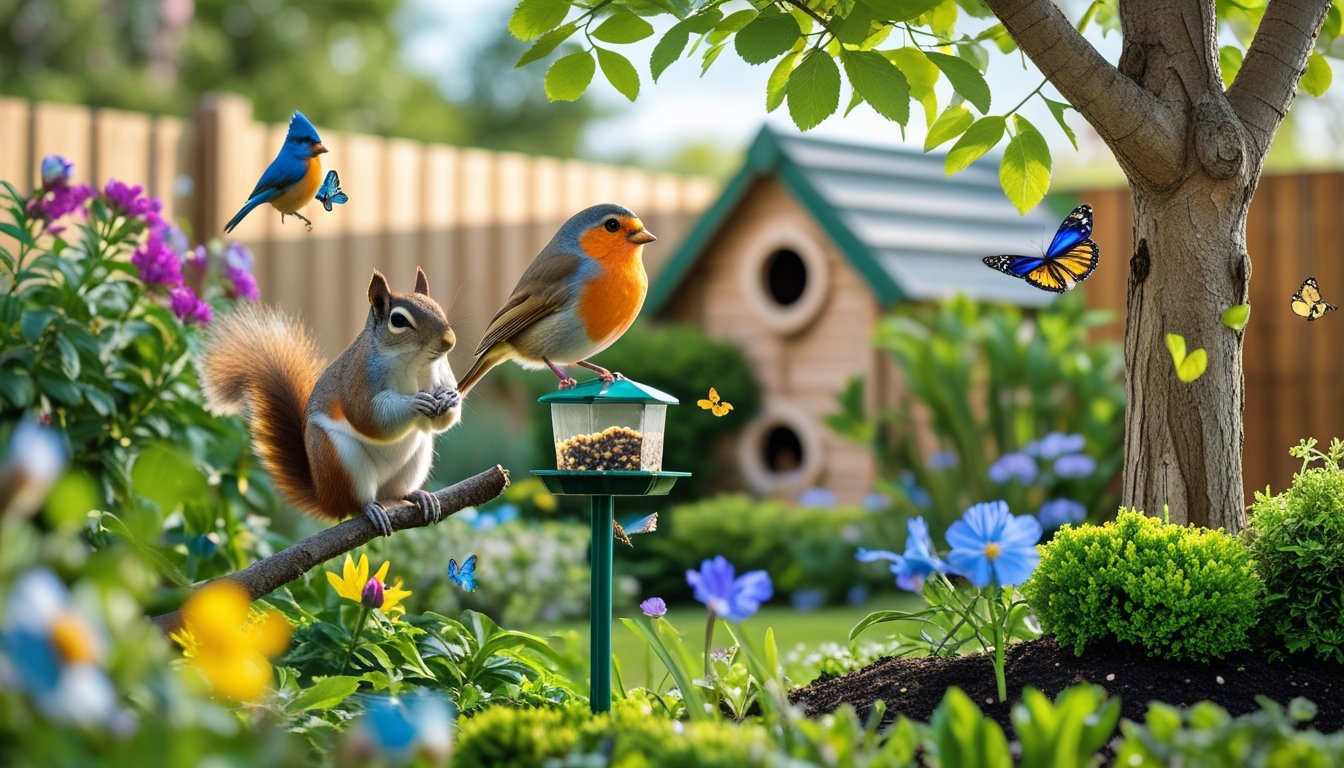Late updated: 24 Oct 2025 11:10
Written by: James Whitaker
Exploring Garden-Loving Wildlife at Home: A Guide to Native Species
Transforming our gardens into havens teeming with life is not just an enriching experience but a vital contribution to our local ecosystems. Creating a wildlife-friendly garden is about knowing what types of creatures are drawn to different habitats and understanding how to provide what they need. From birds to bees, butterflies to beetles, every species plays a role in the garden's health and vitality.

Wildlife gardening allows us to observe and engage with nature right outside our doors. This close relationship encourages biodiversity, offering various species a sanctuary where they can thrive. It requires an understanding of native plants and sustainable practices that support these creatures' well-being.
Our garden becomes a dynamic, living space by integrating these principles, creating a sanctuary that draws us in as much as the wildlife it supports. This approach not only adds beauty and interest to our outdoor spaces but also builds a deeper connection with nature that is both rewarding and fascinating.
Key Takeaways
- Native plants and diverse habitats attract garden-loving wildlife.
- Wildlife gardening enhances biodiversity and ecosystem health.
- Close interaction with nature enriches both our gardens and lives.
Types of Garden-Loving Wildlife

Garden habitats provide a sanctuary for a diverse array of wildlife. From feathered friends to buzzing insects, each plays a critical role in supporting the health of our outdoor spaces.
Beneficial Birds Commonly Found at Home
Birds can be both delightful to watch and incredibly beneficial for gardens. Robins, for instance, help control pest populations by feasting on insects like grubs and caterpillars.
Blue tits and great tits are often spotted darting among the trees, gathering aphids and other small insects. Blackbirds feed on a variety of invertebrates and fruits, making them key players in maintaining ecological balance. Birdhouses and feeders enhance garden appeal by inviting these charming visitors to stay longer.
Insects That Support Garden Health
Insects are crucial for garden vitality. Bees, both honeybees and bumblebees, are renowned pollinators essential for flowering plants and crops.
Ladybirds are invaluable for pest control as they consume aphids voraciously. Butterflies not only add beauty but also assist in pollination. Ground beetles hunt pests like slugs and snails, keeping them in check. Encouraging insects involves growing plants like lavender or marigolds and reducing or eliminating pesticide use.
Mammals and Amphibians Attracted to Gardens
Gardens provide shelter and food for various mammals and amphibians. Hedgehogs are superb slug and snail hunters, benefiting those seeking organic pest control.
Bats eat numerous insects; their presence indicates a thriving ecosystem. Frogs and newts in nearby ponds contribute to pest regulation by consuming large numbers of insects and larvae. Attracting these creatures can be achieved with simple water features or leaving some areas of the garden wild with logs and leaf piles to provide shelter.
Creating a Wildlife-Friendly Home Garden
Creating a wildlife-friendly garden can enhance local biodiversity by offering food, water, and shelter, attracting a variety of native species. By carefully selecting plants and designing thoughtful spaces, we can build a sustainable habitat that benefits both wildlife and the environment.
Designing Spaces to Attract Native Species
To attract native species, it's crucial to design our gardens with structured layers that mimic natural habitats. Use a mix of trees, shrubs, and ground covers to create a diverse ecosystem. An area with dense foliage provides excellent cover for small mammals and birds.
Paths and open spaces are essential too, offering movement and foraging areas. Incorporate features like rock piles or dead wood as they provide hideouts for amphibians and insects. Retaining some wild areas in the garden can also invite a variety of species.
Plant Choices That Encourage Biodiversity
Selecting native plants is a fundamental step in promoting biodiversity. Native species are adapted to the local climate and soil conditions, providing essential resources for indigenous wildlife. Unlike exotic plants, they require less maintenance and water, making them environmentally friendly choices.
Plant diversity is key. A combination of flowering plants, grasses, and shrubs will attract insects like bees and butterflies. These insects, in turn, draw birds and small predators, establishing a balanced ecosystem. We should pay attention to seasonal variations and ensure blooms throughout the year for continuous support.
Providing Water, Shelter, and Food Sources
Water is vital for all wildlife. Installing a small pond or birdbath can significantly boost the attractiveness of our garden to various creatures. Ensure water features are shallow with gently sloping sides to provide safe access for smaller animals.
Shelter is also essential; this can be achieved by providing nesting boxes, log piles, or even hedgehog houses. Food sources should be diverse. We can plant berry-producing shrubs or leave seed-heads for birds. Feeders, especially in colder months, offer additional sustenance when natural resources are scarce.
Through these thoughtful approaches, our gardens become sanctuaries that support and sustain local wildlife.
Frequently Asked Questions

In exploring garden-loving wildlife at home, we encounter various native species, methods to enhance biodiversity, and ways to make our gardens safe havens for animals. By understanding planting strategies, habitat features, seasonal impacts, and natural pest management, we can turn our gardens into vibrant ecosystems.
What native species are most attracted to residential gardens?
Residential gardens in the UK can attract species like hedgehogs, robins, and bumblebees. These creatures are drawn to gardens that offer food sources and shelter. Native plants and flowers play a significant role in attracting these species, creating a haven for both wildlife and garden enthusiasts.
How can one encourage biodiversity within a small garden space?
Maximising biodiversity in compact gardens involves creating layered vegetation and using vertical space. Incorporating various plant types, including shrubs, flowers, and climbers, can invite different wildlife. Creating microhabitats such as log piles or rockeries can further enhance biodiversity.
What are the best planting strategies to support local wildlife?
To support local wildlife, it's essential to use native plants that provide nectar, pollen, and seeds. Wildflowers, berry-producing shrubs, and fruit trees are excellent choices. Companion planting can also attract pollinators and beneficial insects, thus supporting a diverse garden ecosystem.
Which features can be added to gardens to provide safe habitats for animals?
Adding features such as ponds, birdhouses, and insect hotels can provide habitats for wildlife. Water sources can attract amphibians, while dense plant cover offers shelter for small mammals and birds. Incorporating these elements ensures that our gardens are welcoming and supportive environments for various species.
How does seasonal change impact garden wildlife, and how should one prepare?
Seasonal changes affect food availability and habitat conditions for wildlife. In winter, providing food sources like seed feeders and maintaining water supplies can be crucial. During spring and summer, allowing plants to flower and avoiding excessive mowing can support wildlife as they flourish.
What are effective, natural methods for managing pests while protecting beneficial creatures?
Natural pest management strategies include encouraging beneficial insects such as ladybirds, which control aphid populations. Companion planting can deter pests, and using organic materials like neem oil can address pest issues without harming helpful species. Creating a balanced garden ecosystem is key to sustainable pest management.
